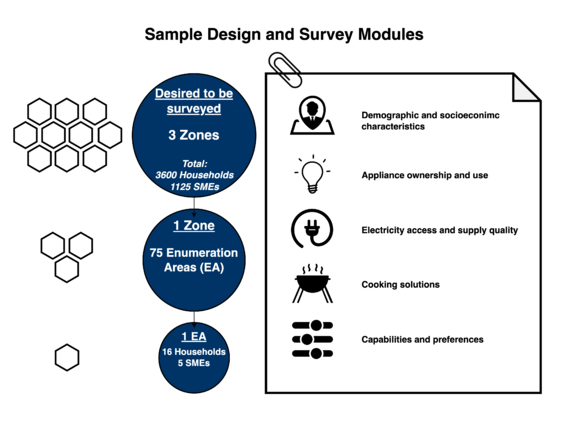Knowledge fuels change
For over a decade, Energypedia has shared free, reliable energy expertise with the world.
We’re now facing a serious funding gap.
Help keep this platform alive — your donation, big or small, truly matters!
Thank you for your support
PeopleSuN Survey Data
As part of the PeopleSuN project funded by the German Federal Ministry of Education and Research (BMBF) within the funding initiative ‘Client II - International Partnerships for Sustainable Innovations’, an extensive dataset was collected through household and enterprise energy surveys conducted in Nigeria in 2021. The surveys covered 225 enumeration areas in three Nigerian geopolitical zones, North West, North Central and South-South. The dataset includes a total of 3,599 households and 1,122 small and medium-sized enterprises. The sample was designed to be representative of rural and peri-urban grid-electrified regions in each zone. The dataset is publicly available on PeopleSuN Harvard dataverse for the open access of academic community, local stakeholders and international initiatives.
Demand Database Generated from PeopleSuN Survey Database
The demand database within the PeopleSuN project was constructed by utilizing survey responses from 3,599 households and 1,122 enterprises. The survey included a set of questions specifically designed to ascertain the ownership of electrical appliances, as well as the timing of their usage during both the day and night.
To generate demand profiles based on appliance ownership and usage hours, the team employed RAMP[2], an open-source bottom-up stochastic model for generating multi-energy load profiles.
Calculated demand profiles are divided into two main categories: households and enterprises.
- For households, five distinct archetypical categories were modeled, employing an assigned “appliance index” value as a categorization basis. The appliance index takes into account the appliances used within households, together with their power consumption and duration of usage.
- For enterprises, a fundamental archetypical demand profile was calculated for each kind of enterprise. Additionally, there is an option to consider the demand profile when typical heavy loads associated with a specific industry are incorporated into an enterprise's profile.
The demand database constitutes an integral part of the PeopleSuN off-grid planner tool. For more detailed information regarding the calculations and methodologies used to construct this database, please refer to the method publication [1].
- ↑ 1.0 1.1 Pelz, S., Chinichian, N., Neyrand, C., & Blechinger, P. (2023). Electricity supply quality and use among rural and peri-urban households and small firms in Nigeria. Scientific Data, 10(1), 273. https://doi.org/10.1038/s41597-023-02185-0
- ↑ https://rampdemand.org/




















